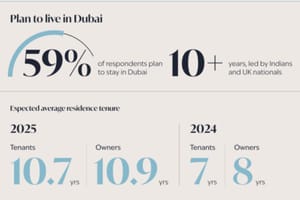Mercer, a leading global consultancy in work, retirement, and health, has released its 2024 Cost of Living City Ranking, offering valuable insights for multinational companies formulating compensation strategies for their international employees.
Top Cities: Asia and Europe Lead Rankings
Hong Kong continues to hold its position as the most expensive city for expatriates in 2024, followed closely by Singapore. These cities are renowned for their high costs, particularly in housing and daily expenses. The substantial expatriate populations and demand for luxury accommodations significantly contribute to these cities’ high rankings.
European Cities in the Top Ten
European cities also feature prominently in the rankings, with Zurich, Geneva, and Basel securing positions in the top five. London made a notable jump, moving up nine places to rank eighth globally. These cities face high costs in housing, goods, and services, driven by strong economies and stable financial sectors.
Middle East Cities: Dubai’s Rise
Dubai has become the most expensive city in the Middle East for international employees, rising three places to rank 15th globally. This increase highlights Dubai’s growing economic stature and the increasing costs associated with its vibrant expat community. Other Middle Eastern cities in the ranking include Abu Dhabi (43rd), Riyadh (90th), and Jeddah (97th). Tel Aviv, previously a top contender, dropped eight places to rank 16th due to changes in local economic factors and stabilizing living costs.
Influencing Factors: Global Dynamics
Inflation and exchange-rate fluctuations remain significant factors affecting the pay and savings of internationally mobile employees. High inflation rates have driven up the costs of essential goods and services in many cities. Additionally, geopolitical instability and local conflicts have increased expenses in housing, utilities, and other areas, particularly in cities with high economic and political volatility. In cities like Hong Kong, Singapore, and Zurich, high housing costs, transportation expenses, and the elevated price of goods and services continue to drive up the cost of living.
Currency Depreciations in Lower-Ranking Cities
Conversely, cities such as Islamabad, Lagos, and Abuja have lower living costs partly due to significant currency depreciations, which make daily expenses cheaper for expatriates.
Housing: A Critical Cost Component
Housing remains a critical factor in the cost of living. Between 2023 and 2024, rental prices have shown significant volatility, influenced by supply-demand mismatches, high population growth, and limited development land. High housing costs force employees to allocate a significant portion of their income to rent or mortgages, leading to financial stress and reduced disposable income. For employers, rising housing costs complicate the task of attracting and retaining talent, as competitive compensation packages need to account for these expenses.
Basket of Goods: Prices on the Rise
Mercer’s analysis of a basket of everyday items shows a notable increase in costs. With continued inflationary pressures globally, items such as olive oil, gasoline, and personal care products have seen significant price hikes. For instance, Buenos Aires experienced a staggering 694% increase in olive oil prices, while Istanbul saw a 145% rise. These differences underscore the importance of localized compensation strategies for multinational companies.
Global Trends and Regional Insights
Asia hosts the top two cities with the highest cost of living, driven by expensive rental markets and high demand for expatriate accommodations. These cities are major economic hubs, attracting many international workers. Five European cities are in the global top ten. Despite high costs in some areas, the European Central Bank forecasts a falling annual inflation rate in the Eurozone, suggesting potential stabilization of costs as economies recover. All ranked US cities are within the top 100, with seven in the top 20, indicating significant living costs.
Africa and Eastern Europe: Significant Cost Increases
Cities in Africa (Accra, Addis Ababa, Cairo) and Eastern Europe (Tirana, Istanbul) have seen the most significant increases in living costs. Inflation and exchange-rate fluctuations are the primary drivers of these changes.
Implications for Businesses
The cost-of-living crisis poses significant challenges for multinational organizations. High living costs are making it difficult to attract and retain top talent for international assignments. Employees are adjusting their lifestyles, cutting discretionary spending, and struggling to meet basic needs in high-cost cities. To navigate these challenges, businesses need to stay informed about local cost-of-living trends and inflation rates. Effective management of these factors requires understanding their impact on employees and exploring innovative solutions tailored to specific business and regional needs.
Mercer’s 2024 Cost of Living City Ranking underscores the complexities of managing international assignments in an era of economic volatility and high living costs. For multinational companies, staying ahead of these trends and understanding their impacts on both business operations and employee well-being is essential for navigating the global landscape effectively.
News Source: Gulf Business









